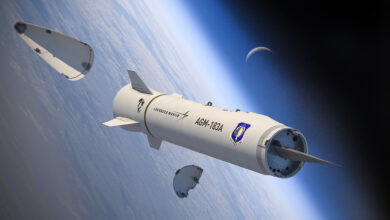US tests medium-range cruise missile after INF treaty pullout
The U.S. Defense Department announced on Monday the test of a medium-range ground-launched cruise missile, just weeks after withdrawing from the Cold War-era pact with Russia eliminating such potentially nuclear-capable weapons.
“The test missile exited its ground mobile launcher and accurately impacted its target after more than 500 kilometers of flight,” the Pentagon said in a statement about the August 18 test.
“Data collected and lessons learned from this test will inform the Department of Defense’s development of future intermediate-range capabilities.”
The 1987 Intermediate-Range Nuclear Forces treaty banned the U.S. and Russia from possessing, producing, or flight-testing ground-launched ballistic and cruise missiles with ranges of 500 to 5,000 km, in an effort to abolish a class of nuclear arms deployed across Europe by the United States and the then-Soviet Union..
While the missile was described as “conventionally configured,” meaning not nuclear-equipped, the launch was a sign of Washington beefing up its nuclear war-fighting capabilities in the wake of the collapse of the INF Treaty on August 2.
Many fear the end of the INF, which Washington accused Moscow of having violated in recent years, will lead to a new and dangerous nuclear arms race.
On August 2, Secretary of Defense Mark Esper said the U.S., no longer bound by the INF, had already begun work to develop “mobile, conventional, ground-launched cruise and ballistic missile systems.”
“Now that we have withdrawn, the Department of Defense will fully pursue the development of these ground-launched conventional missiles as a prudent response to Russia’s actions,” Esper said.
US withdrawal from INF treaty fires the starting pistol on a new arms race
With reporting from AFP











